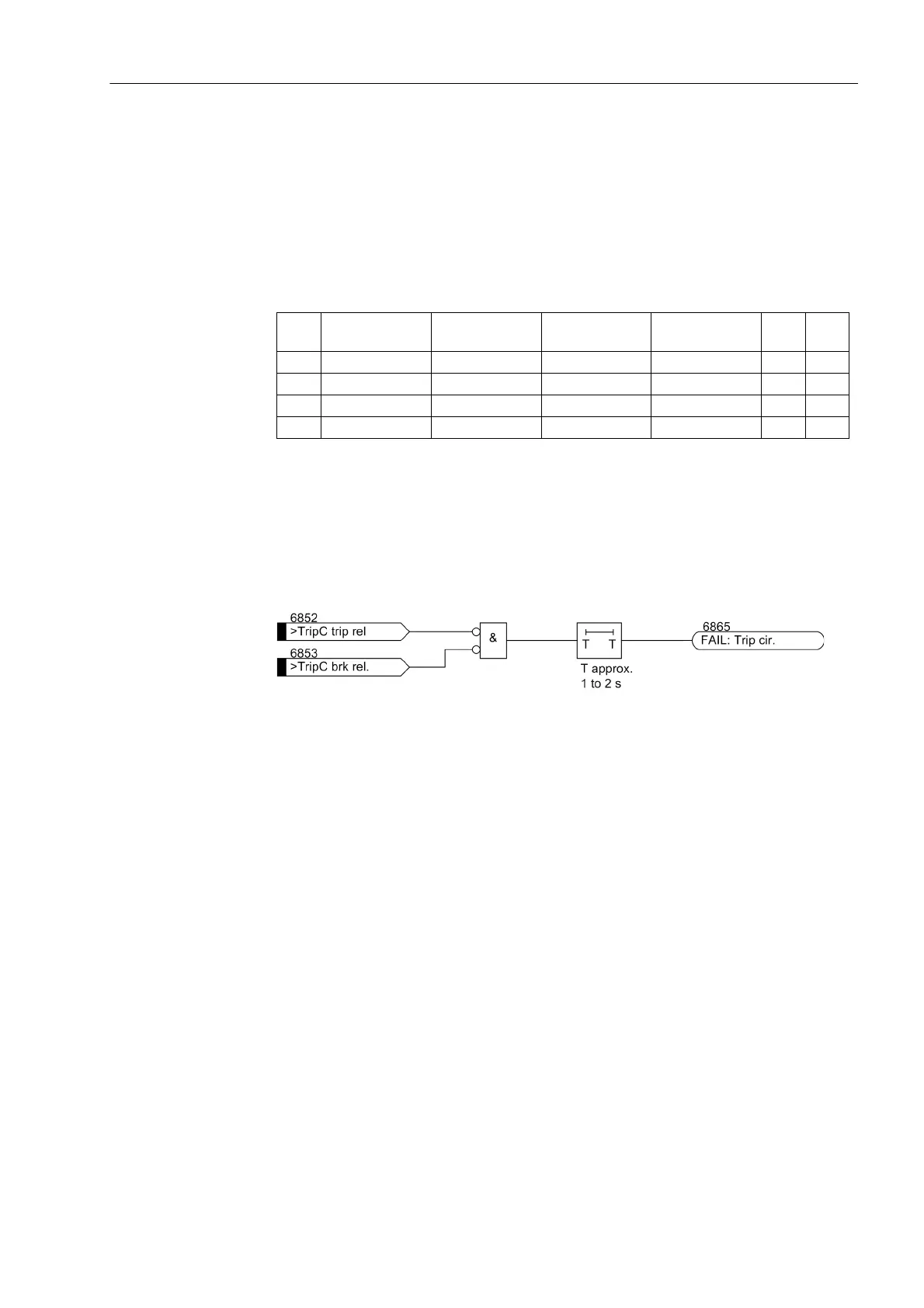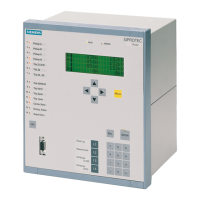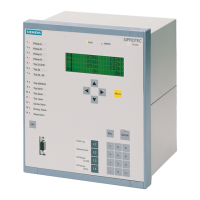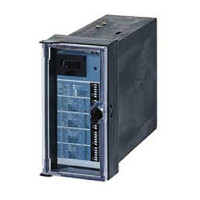2.19 Monitoring Functions
289
7UT613/63x Manual
C53000-G1176-C160-2
The state where both binary inputs are not activated („L“), is only possible during a
short transition phase in intact trip circuits (command relay has issued trip command,
but the CB has not yet opened).
A continuous state of this condition is only possible when the trip circuit has been in-
terrupted, a short-circuit exists in the trip circuit, or battery voltage failure occurs. It is
thus used as a monitoring criterion.
Table 2-11 Status table of the binary inputs depending on command relay and circuit
breaker switching state
The conditions of the two binary inputs are checked periodically. A query takes place
about every 500 ms. Only after n = 3 of these consecutive state queries have detected
a fault, an alarm is given. The repeated measurements determine the delay of the
alarm message and avoid that an alarm is output during short transition periods. After
the fault in the trip circuit is removed, the alarm is reset automatically after the same
time.
Figure 2-118 Logic Diagram of the Trip Circuit Supervision with Two Binary Inputs (simplified)
Supervision Using
One Binary Input
The binary input is connected in parallel to the respective command relay contact of
the protection device according to figure 2-119. The circuit breaker auxiliary contact is
bridged with the help of a high-ohmic substitute resistor R.
The control voltage for the circuit breaker should be at least double the size of the
minimum voltage drops at the binary input (U
Ctrl
>2·U
BImin
). Since at least 19 V are
needed for the binary input, the monitor can be used with a system control voltage of
over 38 V.
An calculation example for the substitute resistance of R is shown in the subsection
„Installation and Commissioning“.
No. Trip relay
contact
Circuit breaker Aux.1 Aux.2 BI 1 BI 2
1 Open ON Closed Open H L
2 Open OFF Open Closed H H
3 Closed ON Closed Open L L
4 Closed OFF Open Closed L H
